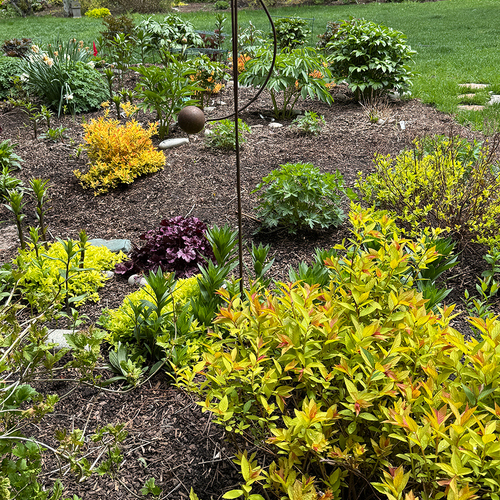Happy Friday, GPODers!
It seems that a lot of you are having a banner spring this year. From flushes of fabulous flowers to big and bright new foliage growth, and even some early-season edibles, we’ve seen just about everything a spring garden has to offer. We continue that theme with first-time contributor Susan Buckley in Idaho. Susan’s garden is at an elevation of 5,500 feet, so she deals with a pretty harsh winter, but that can make spring even more exciting and awe-worthy. A particularly impressive spring display this year is what encouraged her to finally send us some photos.
Hello. I have enjoyed your magazine for years but have never submitted photos; however, this spring has been so beautiful I thought I’d send a few in.
I garden in Zone 5b in Idaho. Our elevation is 5,500 feet. We have three months of snow and below-zero temperatures, then a slow thaw followed by a riotous spring. Summer brings intense sun, drought, and cool nights.
Our house is in a wooded area not far from a river. We are surrounded by massive cottonwoods, quaking aspen (Populus tremuloides, Zones 1–6), chokecherry (Prunus virginiana, Zones 2–7), and native dogwood (Cornus florida, Zones 5–9). I’ve been building and tending these gardens for 15 years. It’s a real joy to marvel at the beauty nature has made and to add a few pockets of non-native horticultural bling.
Elk and deer are frequent visitors, so I am careful about my plant choices. I have about 120 peonies (I can’t help myself), lots of daffodils, hellebores, bleeding heart, nepeta, monarda, salvia, spiraea, ornamental grasses, and dogwood. Lilies do well if I hit them with deer repellent once or twice. A few times a year we get a moose or two. They can eat whatever they want; I don’t mess with them.
Here are a couple of recent photos.
—Susan Buckley
‘Gold Heart’ (Dicentra spectabilis ‘Gold Heart’, Zones 3–9) and hellebores in my shade garden, my serene, low-maintenance garden ❤️
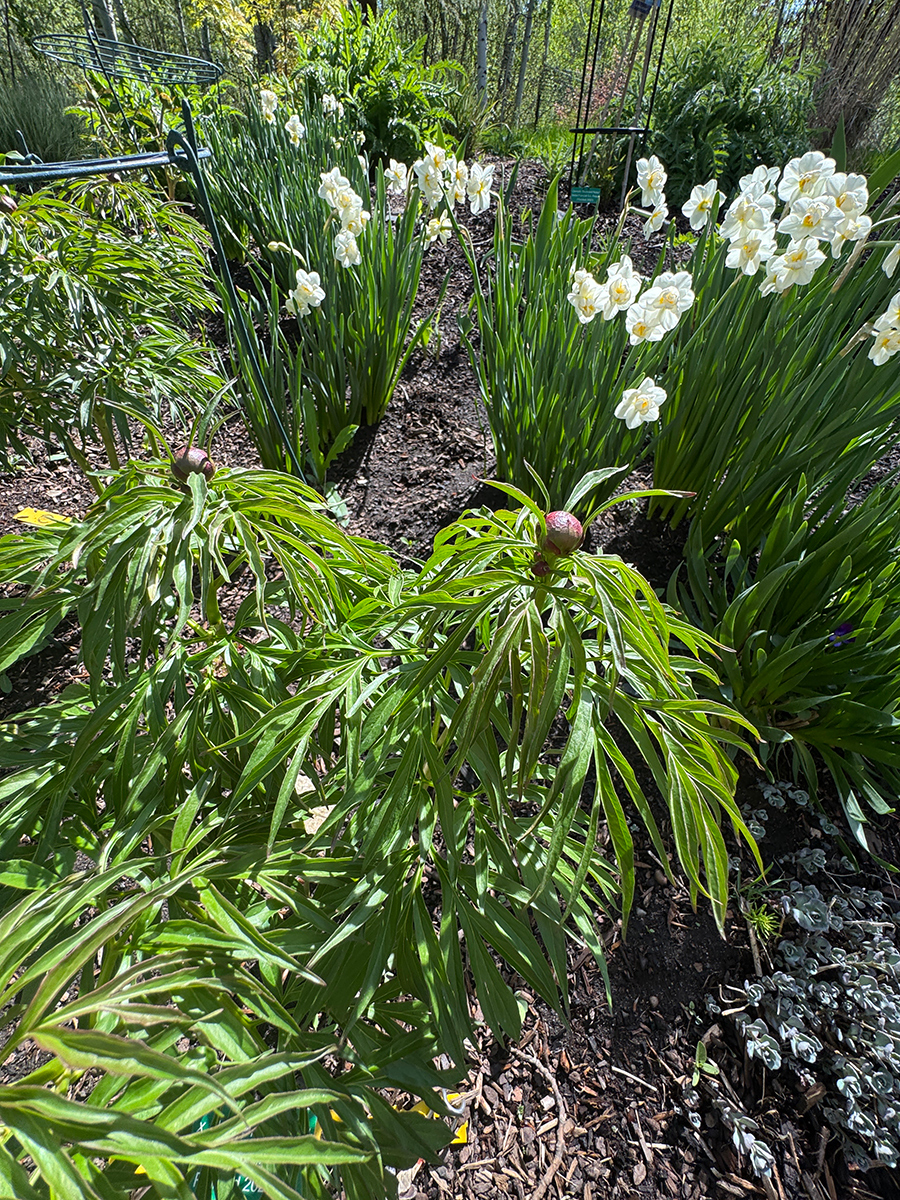 New this year is ‘Merry Mayshine’ peony (Paeonia × lactiflora ‘Merry Mayshine’, Zones 3–7). I love the almost fern-like leaves.
New this year is ‘Merry Mayshine’ peony (Paeonia × lactiflora ‘Merry Mayshine’, Zones 3–7). I love the almost fern-like leaves.
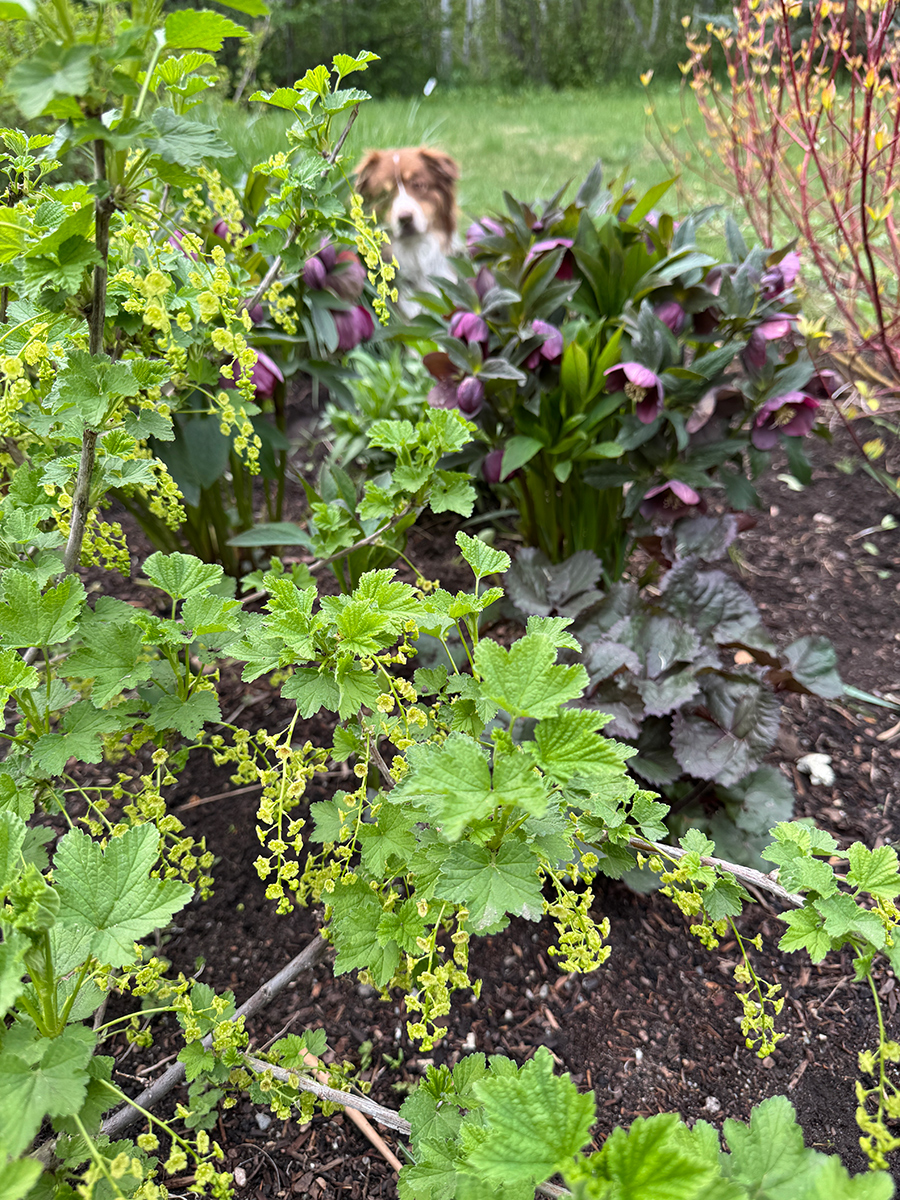 A blooming Pink Champagne currant (Ribes rubrum ‘Champagne Pink’, Zones 3–7) plays well with a purple hellebore, the round blackish leaves of ‘Othello’ ligularia (Ligularia dentata ‘Othello’, Zones 3–8), and the red stems of Neon Burst™ dogwood (Cornus alba ‘Byboughen’, Zones 2–7), a wonderful shrub that brings color to the yard all year long.
A blooming Pink Champagne currant (Ribes rubrum ‘Champagne Pink’, Zones 3–7) plays well with a purple hellebore, the round blackish leaves of ‘Othello’ ligularia (Ligularia dentata ‘Othello’, Zones 3–8), and the red stems of Neon Burst™ dogwood (Cornus alba ‘Byboughen’, Zones 2–7), a wonderful shrub that brings color to the yard all year long.
 These are emerging leaves of a young ‘North Wind’ maple (Acer × pseudosieboldianum ‘IslNW’, Zones 4–7), a hybrid of a Japanese maple and a Korean species. Its leaves are bright red in the spring. The elk have made this barrier a necessity until the tree’s branches are out of reach. The tree is worth the wait.
These are emerging leaves of a young ‘North Wind’ maple (Acer × pseudosieboldianum ‘IslNW’, Zones 4–7), a hybrid of a Japanese maple and a Korean species. Its leaves are bright red in the spring. The elk have made this barrier a necessity until the tree’s branches are out of reach. The tree is worth the wait.
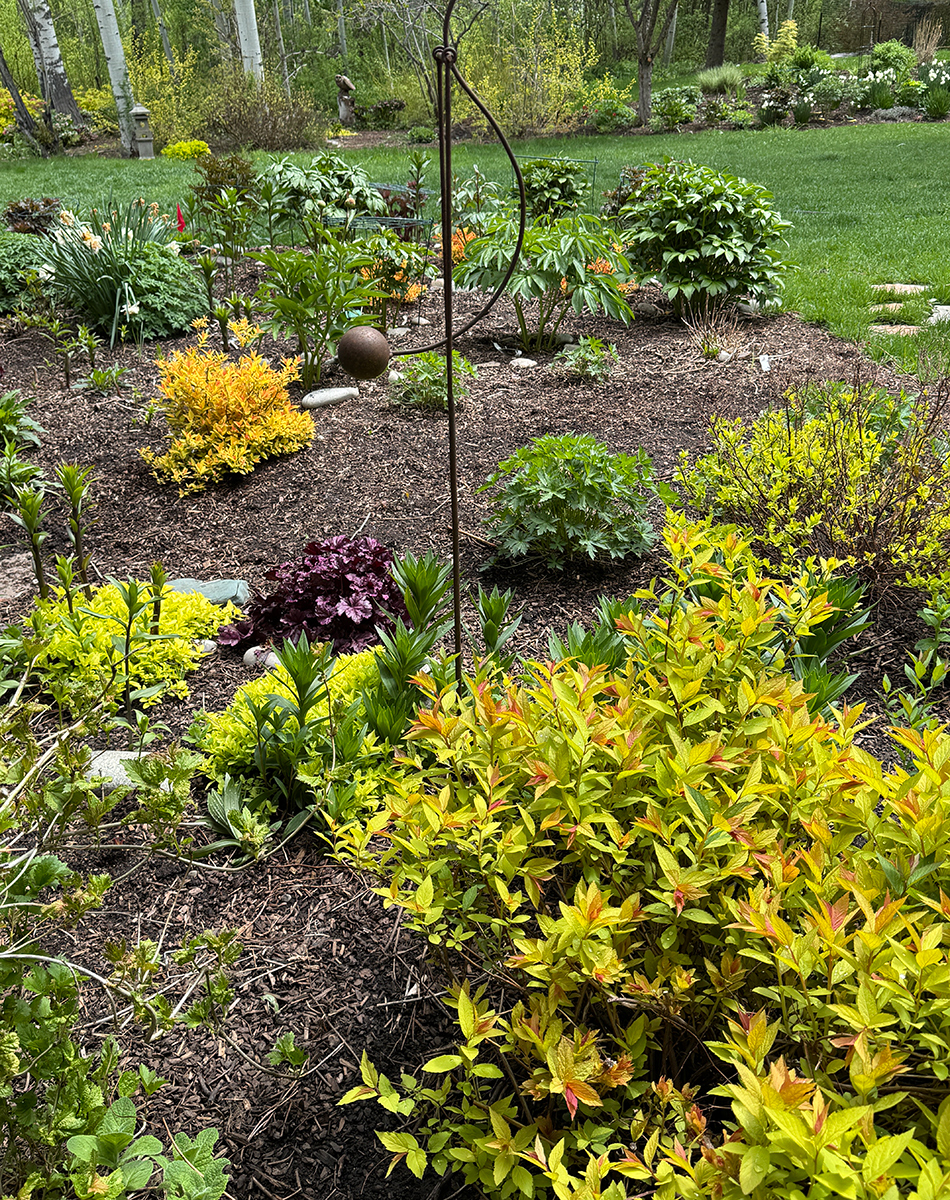 I love spiraea. They ask for nothing but sun and occasional water and throw pink, white, or red flowers against foliage in tones of green, blue, red, or gold. This bed is only a few years old and needed a pop of yellow. In the foreground is the ever-reliable ‘Goldflame’ (S. × bumalda ‘Goldflame’, Zones 4–9). To the middle left is Double Play Big Bang (S. japonica ‘Tracy’, Zones 3–9) and beyond, among the peonies, are a few Double Play Candy Corn (S. japonica ‘NCSX1’, Zones 4–8), tiny but bright.
I love spiraea. They ask for nothing but sun and occasional water and throw pink, white, or red flowers against foliage in tones of green, blue, red, or gold. This bed is only a few years old and needed a pop of yellow. In the foreground is the ever-reliable ‘Goldflame’ (S. × bumalda ‘Goldflame’, Zones 4–9). To the middle left is Double Play Big Bang (S. japonica ‘Tracy’, Zones 3–9) and beyond, among the peonies, are a few Double Play Candy Corn (S. japonica ‘NCSX1’, Zones 4–8), tiny but bright.
Thank you so much for sharing your delightful array of spring plants with us, Susan! This has been a wonderful introduction to your garden, but I sincerely hope that your first submission is not your last and we get to see even more from your garden this year.
Now that Memorial Day has come and gone, we’re on the fast track to summer and the last blooms of spring will be faded before we know it. While you’re out enjoying your spring garden this weekend, be sure to take some photos to capture this fleeting beauty, and consider sharing them with Garden Photo of the Day! Follow the directions below to submit photos via email, or send me a DM on Instagram: @agirlherdogandtheroad.
We want to see YOUR garden!
Have photos to share? We’d love to see your garden, a particular collection of plants you love, or a wonderful garden you had the chance to visit!
To submit, send 5–10 photos to [email protected] along with some information about the plants in the pictures and where you took the photos. We’d love to hear where you are located, how long you’ve been gardening, successes you are proud of, failures you learned from, hopes for the future, favorite plants, or funny stories from your garden.
Have a mobile phone? Tag your photos on Facebook, Instagram or Twitter with #FineGardening!
Do you receive the GPOD by email yet? Sign up here
Fine Gardening Recommended Products

Lee Valley Garden Knife
Fine Gardening receives a commission for items purchased through links on this site, including Amazon Associates and other affiliate advertising programs.
These knives have a trowel-like blade with a sharp edge to let you use the same tool for digging, planting and cutting. The blade is sharpened on both sides, with serrations on one edge to help with cutting tough roots or dividing perennials. Deeply stamped markings on the blade (in 1/2″ and 5mm increments) help you set the correct planting depth for seeds and bulbs.
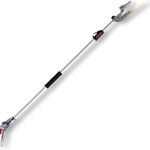
ARS Telescoping Long Reach Pruner
Fine Gardening receives a commission for items purchased through links on this site, including Amazon Associates and other affiliate advertising programs.
Telescopes from 4 to 7′. Cut and Hold (160) Blades. Drop forged blades for unsurpassed long lasting sharpness. Lightweight, 2.3 lbs., for continued use. Perfectly balanced for easy pruning.
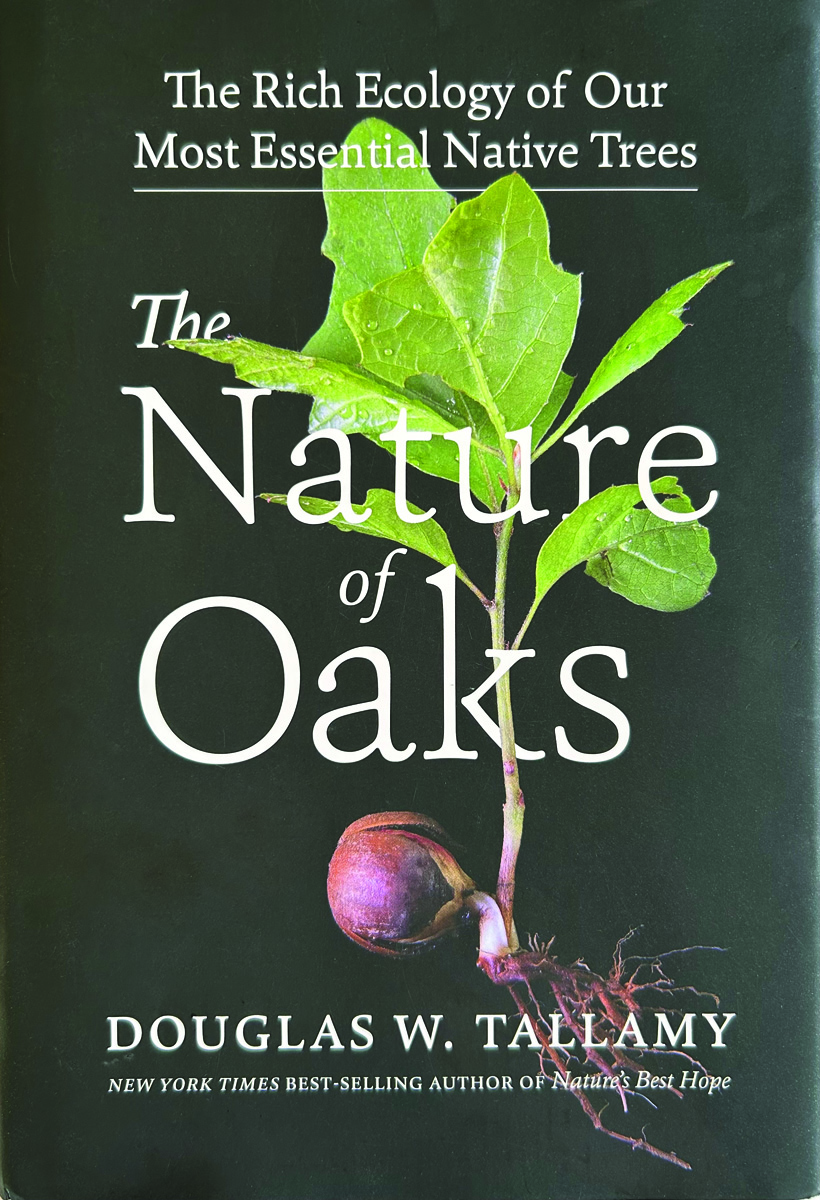
The Nature of Oaks: The Rich Ecology of Our Most Essential Native Trees
Fine Gardening receives a commission for items purchased through links on this site, including Amazon Associates and other affiliate advertising programs.
The Nature of Oaks reveals what is going on in oak trees month by month, highlighting the seasonal cycles of life, death, and renewal. From woodpeckers who collect and store hundreds of acorns for sustenance to the beauty of jewel caterpillars, Doug Tallamy illuminates and celebrates the wonders that occur right in our own backyards. He also shares practical advice about how to plant and care for an oak, along with information about the best oak species for your area.

